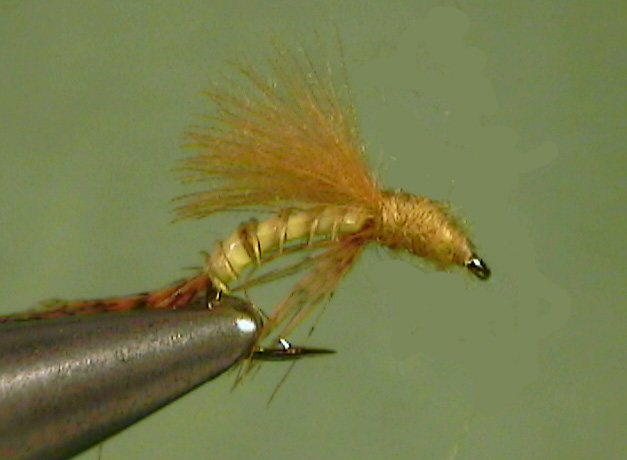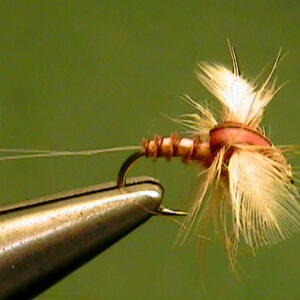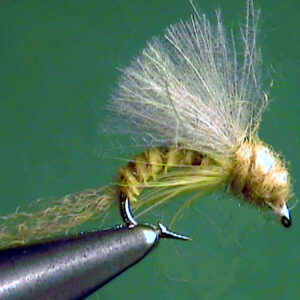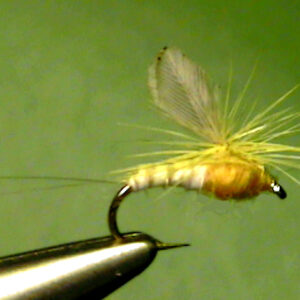Hook Size: 14/16
The Light Cahill mayfly emerger is a trout fly that imitates the nymph changing to a dun. It looks a little more like the nymph than the dun. It imitates the nymph accenting from the bottom to the surface of the water. The CDC wing should float flush with the surface skim.
As stated in the nymph section, the Light Cahills live in fast water runs and riffles.
When they get near their hatch time and get ready to emerge they move to
mover moderate to slow moving water that’s very near the fast water they live in
during their one year life cycle. Usually this is only a few feet at the most. Once
their are ready to hatch, they wiggle themselves to the surface to emerge in the
skim. There their wing pad splits, out come the wings and finally the body and tail.
They can begin hatching in the early afternoon around 2:00 PM at the first of
their hatch period but the warmer it gets, the later in the day they hatch. On
clear, very warm days the hatch occurs very late, near sunset. The emerger
stage of the hatch is a very short one, the hatch lasting only about an hour under
normal circumstances. Once they reach the surface, the nymphs change into a
dun in a relatively short time.
Presentation:
Emerger imitations work best if they are presented in the current seams at the
edges of the fast water runs and riffles. The best procedure is to use a short up
and across presentations. Both the plain Light Cahill Emerger and the Light
Cahill Emerger with the trailing shuck should float flush with the surface of the
water.
The plain emerger usually works best but it is more difficult to fish because it is
more difficult to see on the water. The top of the CDC wings should float flush
with the surface of the water with the body of the fly hanging down in an almost
upright position.
The trailing shuck emerger floats flush with the surface but level with the surface.
It shouldn’t be treated with floatant like a dry fly because you want the fly to float
low in the water like the real emerging Light Cahills.
If the water is very clear, you may need to go to a light leader and tippet. Most of
the time a 5X tippet works fine but the leader should be at least 9 foot long in
most cases. You can get by with a 7 and a half foot leader in some pocket water
streams.
Copyright 2013 James Marsh




